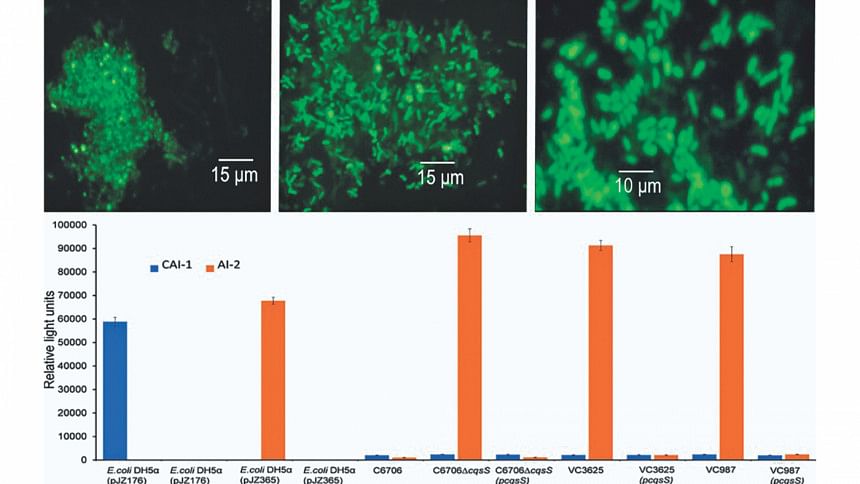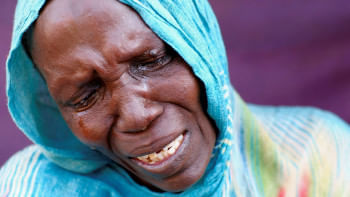Inter-university collaboration can help scientific research in Bangladesh

When I returned to Bangladesh in the late 1980s after pursuing higher studies in England as a commonwealth scholar, there were no private universities and only six public universities in Bangladesh. The research infrastructure, investment and output in these local universities were minimal compared to that of most western universities. Unfortunately, the facilities and involvement in research have not significantly improved even now when there are more than 150 universities in the country with at least 100 of them being private. While the public universities are financially supported by the government, and research and capacity building grants are often provided to them through the University Grants Commission, most private universities are under increasing pressure to adjust to evolving competition and financial burden. Furthermore, the universities are beginning to realise that their visibility and rankings locally and internationally depend substantially on their research infrastructure, productivity and publication records, and these would require more investment. Fortunately, however, this realisation brings hope that at least the private universities, who control their own finance, will see the wisdom to revise or reallocate their budgets to invest more in research. The purpose of this discussion is to provide examples and show a way forward in which private universities might better utilise their already existing facilities in a collaborative spirit and promote research without any drastic increase in financial burden.
My experience in various research institutions and universities of over two decades has taught me that scientific research cannot be done in isolation, rather it is always facilitated by collaboration between diverse institutions and researchers. I have successfully led research teams and students who conducted contemporary biomedical research while staying in Bangladesh, and published numerous papers in high impact scientific journals, such as Nature, PNAS and the Lancet. This achievement was possible because I was able to obtain support from researchers in various other countries and institutions, and we successfully negotiated a win-win scenario. The key to this endeavour was sharing available research infrastructures, knowledge, and ideas in a spirit of equal partnership.
Recently, I tested a similar model of scientific collaboration, although informally with faculty members in several private universities in Bangladesh, and led a research team to improve detection methods for pathogenic bacteria in environmental water. Waterborne and food-borne diseases such as diarrhoea and typhoid are caused by these bacteria.
To explain it in a simplified form, contemporary advances in biomedical research have been enabling scientists to understand how bacteria (many of which are dreadful pathogens) communicate using chemicals that serve as molecular signals. One of these communication strategies, known as “quorum sensing,” regulates biological processes in bacteria depending on their cell density or population size in the aquatic environment, since certain activities are only useful for the bacteria if they work in a large group, and not as individuals. The phenomenon of “quorum sensing” enables bacteria to transit between a dormant and an active state depending on the concentration of their cells in water. Pathogenic bacteria cause waterborne diseases to spread through water depending on their abundance in an active form, and routine detection techniques by culturing or growing them in the laboratory can detect bacteria in this active state only. On the other hand, in the dormant state, most bacteria cannot be detected in routine culture assays, which might result in a failure to warn people against potential disease outbreaks which spread through contaminated water. It is interesting to know what exactly causes the dormant cells of bacteria to periodically resuscitate to the active form. The quorum sensing system involves chemical signal molecules called “autoinducers,” which are produced by bacterial cells and detected by their neighboring cells, to get a sense of the density of bacteria in an aquatic niche. At a certain threshold concentration of these autoinducer-producing bacteria, their gene expression pattern and thus metabolic activities change, leading to enhancement of their conversion between dormant and active states.
Understandably, many people would be surprised to hear that such a cutting-edge topic in biology is an active area of research and discovery in Bangladesh, but this is exactly the case with our recent research. The findings from these studies, recently published in the journal PLOS One, are based on analysis of the quorum sensing system in the cholera pathogen Vibrio cholerae, which is a serious public health hazard in Bangladesh.
Our study shows that certain variant strains of the V. cholerae bacteria which exist in the environment vastly overproduce a chemical signal called autoinducer AI-2, which produces a wake-up call for the dormant bacteria in water. This causes rapid conversion of dormant bacteria into the active form. This phenomenon was further confirmed by testing various laboratory generated mutant bacteria as well as by determining the relevant gene sequence of naturally occurring strains which overproduce AI-2 in their culture. Environmental water samples which were found to be negative for pathogenic V. cholerae in routine cultures were selected to test whether pathogenic Vibrio cholerae could be recovered from such apparently negative water samples after treatment with the autoinducers produced by the mutant strains. These experiments confirmed that the chemical signals do indeed resuscitate dormant V. cholerae cells in water samples when cultured in the presence of these molecules produced by the mutant strains.
The implications of these findings are manifold. On the one hand, it provides a method for overproducing an autoinducer and use it to develop improved methods for water testing. Perhaps even greater implication is in understanding a natural process which might contribute to resuscitation of dormant pathogenic microorganisms in water and initiate epidemic outbreaks. Adequate monitoring strategies using improved detection methods can be a predictive indicator for cholera outbreaks. Besides, such a phenomenon might also be true for other waterborne diseases, beyond cholera as such.
As mentioned above, a remarkable aspect of this research endeavour is that it was done through informal collaboration among researchers from multiple private universities in Bangladesh under my leadership, thus creating an example of sharing available facilities to conduct cutting-edge research in Bangladesh. These universities included Independent University Bangladesh (IUB), BRAC University, and North South University (NSU). We also collaborated with Osaka Prefecture University, Japan and the icddr,b in Dhaka for access to more advanced molecular technology. Researchers who contributed substantially to this work and authored the paper are Iftekhar Bin Naser, M. Mozammel Hoque, Shah Nayeem Faruque, M. Kamruzzaman, Shinji Yamasaki, and Shah M. Faruque. Hopefully, this recent example will help to convince stakeholders that modern scientific research is possible in Bangladesh and it benefits all research infrastructure we may have available in various institutions, if we are ready to share knowledge.
Although there have been efforts to develop some research laboratories in several private universities, the facilities available currently and research capacity fall way short of accepted international standards. Most private universities in Bangladesh are either unable or even unwilling to invest large sums as required to develop modern research facilities, since the prospect for a profitable outcome is not immediate, and potential benefits in the long run is not readily recognised. However, there is substantial scope to improve upon the current scenario, even if the existing infrastructure in a number of private universities are shared to conduct collaborative research. Besides facilities, the development of trained personnel is also a key requirement. Therefore, for research capacity building, it may be feasible for interested universities to jointly organise and conduct training and workshops on various aspects of research methodologies, adopting and practicing standard operating procedures, and compliance to ethical and bio-safety guidelines. A multi-disciplinary group of faculty members from different universities may participate and share resources and ideas, as well as apply for joint research funds to attract grants from donors who are willing to provide financial assistance in collaborative research. Regular involvement of students and their supervising faculty members in these research programs is likely to set the trend of improvement and eventually attain the desired capability in research.
It is crucial that the concerned universities recognise that increased research activity leads both to increased revenue and to higher rankings, in turn leading to more student applications.
Dr. Shah M. Faruque is a Professor of Microbiology at Independent University Bangladesh (IUB).
Citation: Naser IB, Hoque MM, Faruque SN, Kamruzzaman M, Yamasaki S, Faruque SM (2019) Vibrio cholerae strains with inactivated cqsS gene overproduce autoinducer-2 which enhances resuscitation of dormant environmental V.cholerae. PLoS ONE 14(10): e0223226. https://doi.org/10.1371/journal.pone.0223226

 For all latest news, follow The Daily Star's Google News channel.
For all latest news, follow The Daily Star's Google News channel. 



Comments